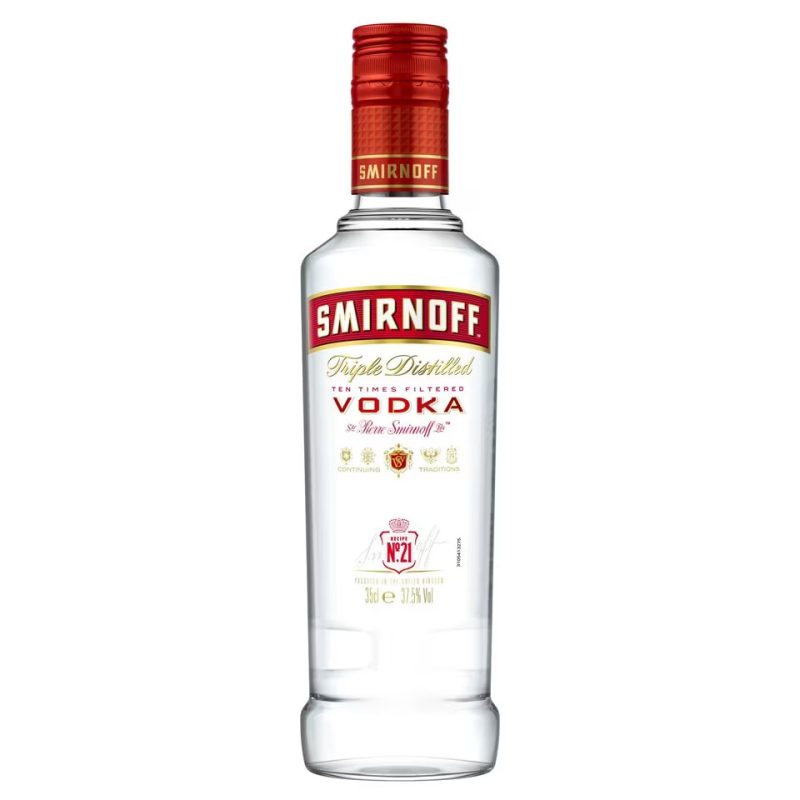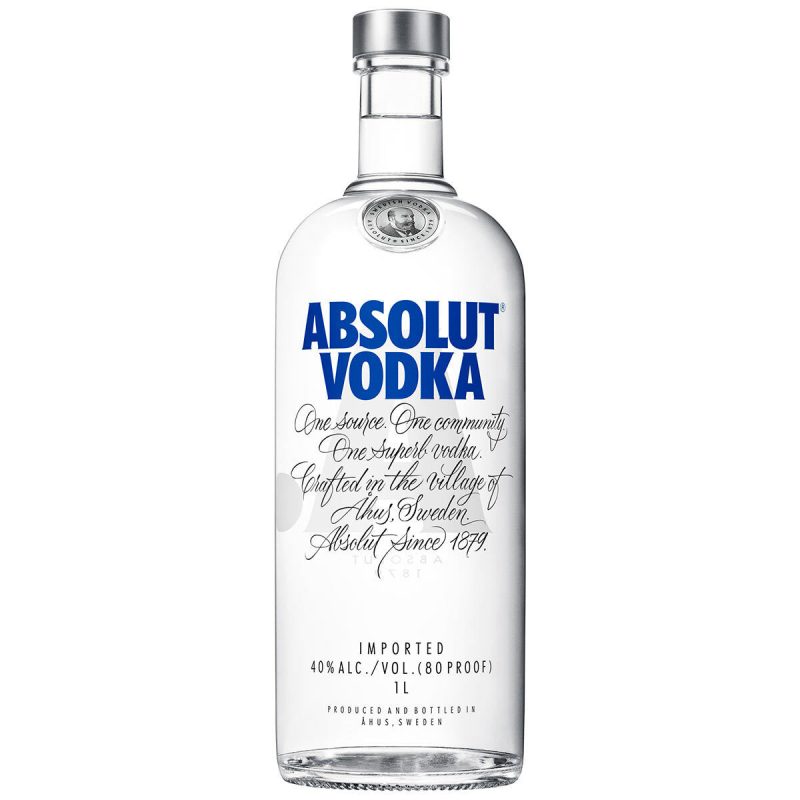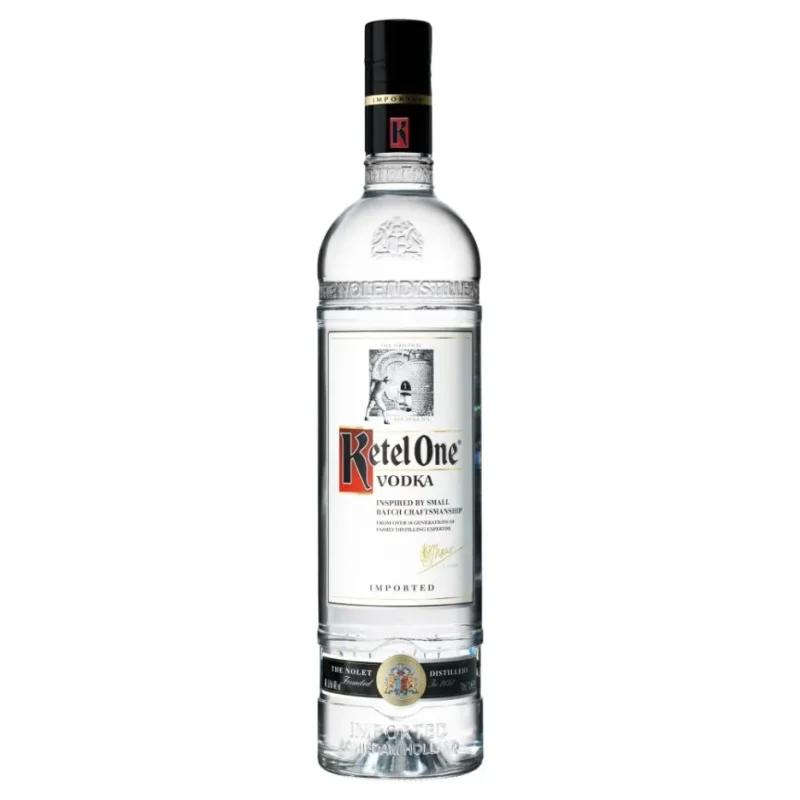Vodka, one of the world's most popular and versatile spirits, has a fascinating history and production process. With several grains and sometimes even potatoes used to create vodka, it's intriguing to delve into the what and how involved in crafting this popular drink. So, are you curious about vodka's main ingredient and its production? Grab your favorite cup of vodka, sit back, and dive with us into the captivating world; as we uncover the grain behind this versatile spirit!
Best Budget Vodkas Ranked
Understanding the Basics: What is Vodka?
Vodka is a clear, unaged liquor traditionally made from the distillation of fermented grains, potatoes, and sometimes even fruits. Originating from Eastern European countries like Russia and Poland, vodka has taken the world by storm and can be enjoyed neat, on the rocks, or in countless cocktails. The name 'vodka' stems from the Slavic word 'voda,' which means water – showcasing the spirit's clean, crisp taste.
Grains Used in Vodka Production
Though the grain used in vodka production can vary depending on the country and distillery, some common grains include:
- Wheat
- Rye
- Corn
- Barley
- Rice
1. Wheat Vodka
Wheat is the most common grain used for vodka production, especially in premium brands. This is because wheat vodkas tend to have a smooth, clean taste with subtle sweetness. Some of the most popular wheat-based vodkas include Grey Goose, Absolut, and Ketel One.
2. Rye Vodka
Rye is another popular grain used for making vodka, known for creating a spicy and rich flavor profile. Belvedere, which is produced in Poland, is a well-known example of a rye-based vodka.
3. Corn Vodka
Corn-based vodka is gluten-free and offers a sweet, smooth taste. Tito's Handmade Vodka from Texas, USA is one of the most popular examples of a corn-based vodka brand.
4. Barley Vodka
Barley, a grain often associated with beer production, can also be used to create vodka with a slightly sweet and creamy texture. Finlandia is a prominent barley-based vodka brand.
5. Rice Vodka
Rice vodka, though less common, is produced mainly in Asian countries like Japan and South Korea. This type of vodka offers a smooth texture and mild flavor.
Vodka's Production Process: From Grain to Bottle
The process of making vodka is a precise art that requires several steps:
- First, the chosen grain (or other ingredients like potatoes) is mixed with water and enzymes to create mash.
- The mash is then fermented for a few days, converting the sugar into alcohol, producing a low-alcohol-content beer-like substance.
- Next, the mixture undergoes a distillation process – often multiple times – to separate and concentrate the alcohol. This leaves behind a high-alcohol-content neutral spirit.
- The spirit is then filtered several times, often through charcoal, to remove impurities and create a clean, smooth taste.
- Finally, the vodka is diluted with water to reach the desired alcohol content before bottling.
Vodka Is Made From What Grain Example:
Imagine walking into a swanky bar and ordering a classic vodka martini. With so many vodka options available, knowing the difference between various types can genuinely enhance your experience. When choosing a wheat vodka, you can expect a smooth and sweet drink, while selecting a rye vodka will provide a spicy and bold flavor. By understanding the grains used in vodka production, you can confidently make a choice based on your personal taste preferences.
Frequently Asked Questions
What exactly is vodka?
Vodka is a clear distilled alcoholic beverage with origins in Eastern Europe. It is primarily composed of water and ethanol but can also contain flavorings. Vodka is known for its high purity and lack of a distinctive flavor, which makes it a versatile ingredient in cocktails.
What grain is vodka typically made from?
Traditionally, vodka is made from cereal grains such as wheat, rye, corn, or barley. The choice of grain can influence the final flavor profile of the vodka, although it is generally known for its neutral taste.
Can vodka be made from other substances aside from grain?
Yes, vodka can also be made from potatoes, grapes, sugar beet molasses, and sometimes even fruits or sugars. Again, this can subtly affect the vodka's final taste and texture.
How does the type of grain affect the vodka?
The type of grain used can impart slight variations in the texture and finish of the vodka. For instance, wheat typically yields a very smooth vodka, while rye can offer a spicy or peppery note.
Does the grain used change the way vodka should be consumed?
Not particularly. Regardless of the grain used, vodka can be enjoyed neat, on the rocks, or as a key component in a variety of cocktails. However, connoisseurs might appreciate subtle differences when tasting vodkas made from different grains.
Is gluten-free vodka available for those with allergies?
Yes, gluten-free vodka options are available, typically distilled from corn, potatoes, or grapes. The distillation process typically removes the gluten, making most vodkas safe for those with gluten intolerance, but it is always best to confirm with the manufacturer.
How is vodka made?
Vodka production generally involves the fermentation of grains or other sugar-containing materials to create an alcoholic mixture, followed by distillation to increase the alcohol content and purification to remove impurities.
Why is vodka distilled multiple times?
Multiple distillations can increase the purity of the vodka and remove impurities that could affect its taste and smell. This results in a smoother and cleaner final product.
What does "proof" mean in the context of vodka?
"Proof" is a measure of the alcohol content in spirits. In the United States, proof is twice the percentage of alcohol by volume (ABV). For example, a vodka that is 40% ABV will be labeled as 80 proof.
How should vodka be stored?
Vodka should be stored upright in a cool, dark place. It doesn't need to be refrigerated, but chilling can enhance its smoothness, especially when served neat.
Can vodka spoil?
Vodka is a high-proof beverage which means it is less likely to spoil. As long as it is stored properly, it has an indefinite shelf life and should not spoil.
What makes vodka "premium"?
"Premium" vodkas are typically distinguished by the quality of ingredients, the number of distillations, filtration methods, and the overall smoothness and purity of the product. Brand reputation and packaging can also play a role.
How can I tell if a vodka is good quality?
Good quality vodka is generally smooth, with a clean taste and little to no harsh aftertaste. It should not have any off-putting smells, and the mouthfeel should be pleasant. Tasting the vodka neat at room temperature is the best way to judge its quality.
Does the water quality affect vodka?
Yes, the quality of the water used in vodka production is crucial, as water makes up a significant portion of the final product. Pure, mineral-rich water can contribute to the overall smoothness and taste of the vodka.
Is it true that vodka can be used for medicinal or antiseptic purposes?
While not a substitute for professional medical treatment, vodka has been historically used for various medicinal purposes due to its antiseptic properties. It has been used as a disinfectant or even as a topical pain reliever.
Are there any regulations governing vodka production?
Yes, there are regulations that differ by country. In the EU, vodka must have a minimum of 37.5% ABV, while in the United States, the minimum is 40% ABV. There are also regulations related to labeling and the production process.
Why do some vodkas cost so much more than others?
The price of vodka can vary widely based on several factors, including the quality of ingredients, the distillation process, filtration methods, branding, packaging, and the prestige associated with the vodka.
What is the traditional way to drink vodka?
In many of the countries where vodka is traditionally consumed, such as Russia and Poland, it is often drunk neat, chilled, and in small glasses. It is frequently accompanied by food, like pickles or other savory snacks.
What is the difference between flavored and infused vodka?
Flavored vodka has natural or artificial flavors added during production, while infused vodka has had ingredients like fruits or herbs steeped in it over time to naturally absorb their flavors.
How important is the filtration process in vodka production?
The filtration process is critical in creating a smooth texture and removing any remaining impurities that could affect the vodka's taste. Common filtration systems use materials like charcoal, silver, or even gold.
Can making vodka be an eco-friendly process?
Yes, some vodka producers are committed to eco-friendly practices, such as using organic grains, implementing sustainable farming methods, recycling process water, and reducing waste through innovative production techniques.
Do different countries produce different styles of vodka?
Yes, vodkas from different regions can exhibit distinct characteristics due to local ingredients, traditions, and production techniques. For example, Russian vodka may have different flavor notes compared to Polish or American vodka.
Now that you've gained a wealth of knowledge on the main grains behind vodka production, why not share your newfound expertise with friends and family? Whether you're enjoying a relaxing drink or discussing the intricacies of this spirit at a gathering, this information will undoubtedly add a new dimension to your vodka appreciation. Don't forget to explore other guides on Vodka Doctors to expand your understanding even further and discover mouth-watering cocktail recipes to impress at your next party. Cheers!
















